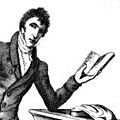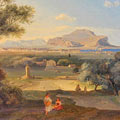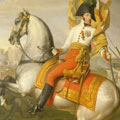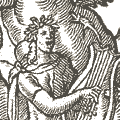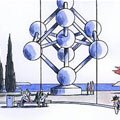en Bacchus en Ariadne (1821) van Antoine-Jean Gros
Nadat Napoleon in 1815 definitief verslagen was, keerde overal in Europa de monarchie terug. Ook de kunst deed een stap terug. Het revolutionaire elan maakte plaats voor het sentimentalisme en de mythologische voorstellingen van vóór 1789. Goede voorbeelden daarvan zijn twee dubbelportretten van de meesters van het Franse neoclassicisme: Jacques-Louis David (1748-1825) en zijn leerling Antoine-Jean Gros (1771-1835).
Tijdens de Restauratie leefde Jacques-Louis David, de grootste Franse schilder van zijn tijd, in ballingschap in Brussel, toen nog in het Koninkrijk der Nederlanden. Daar schilderde hij Het afscheid van Telemachus and Eucharis in zijn beroemde neoclassicistische stijl. In 1987 werd het schilderij aangekocht door het J. Paul Getty Museum.
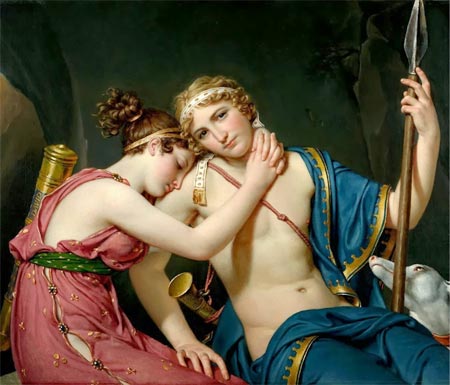
Het afscheid van Telemachus en Eucharis
Bron: getty.edu
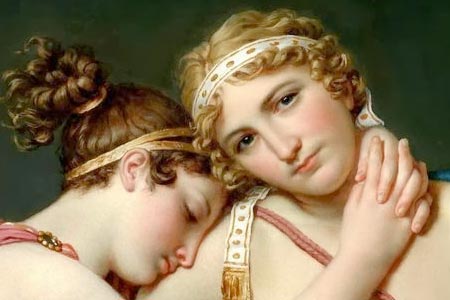
Drie jaar later schilderde David’s beroemde leerling Antoine-Jean Gros een ander mythologisch koppel. Zijn Bacchus en Ariadne hangt sinds 1977 in de National Gallery of Canada. Gros werd in tegenstelling tot zijn leermeester niet verbannen en werd nadat in 1814 de monarchie hersteld was zelfs hofschilder van Lodewijk XVIII. Toch eindigde zijn leven tragisch met zijn zelfmoord in 1835.

Bacchus en Ariadne
Bron: gallery.ca


